Story
PICCOLO photo diary: 30-day scientific expedition in Antarctica
2 February 2024
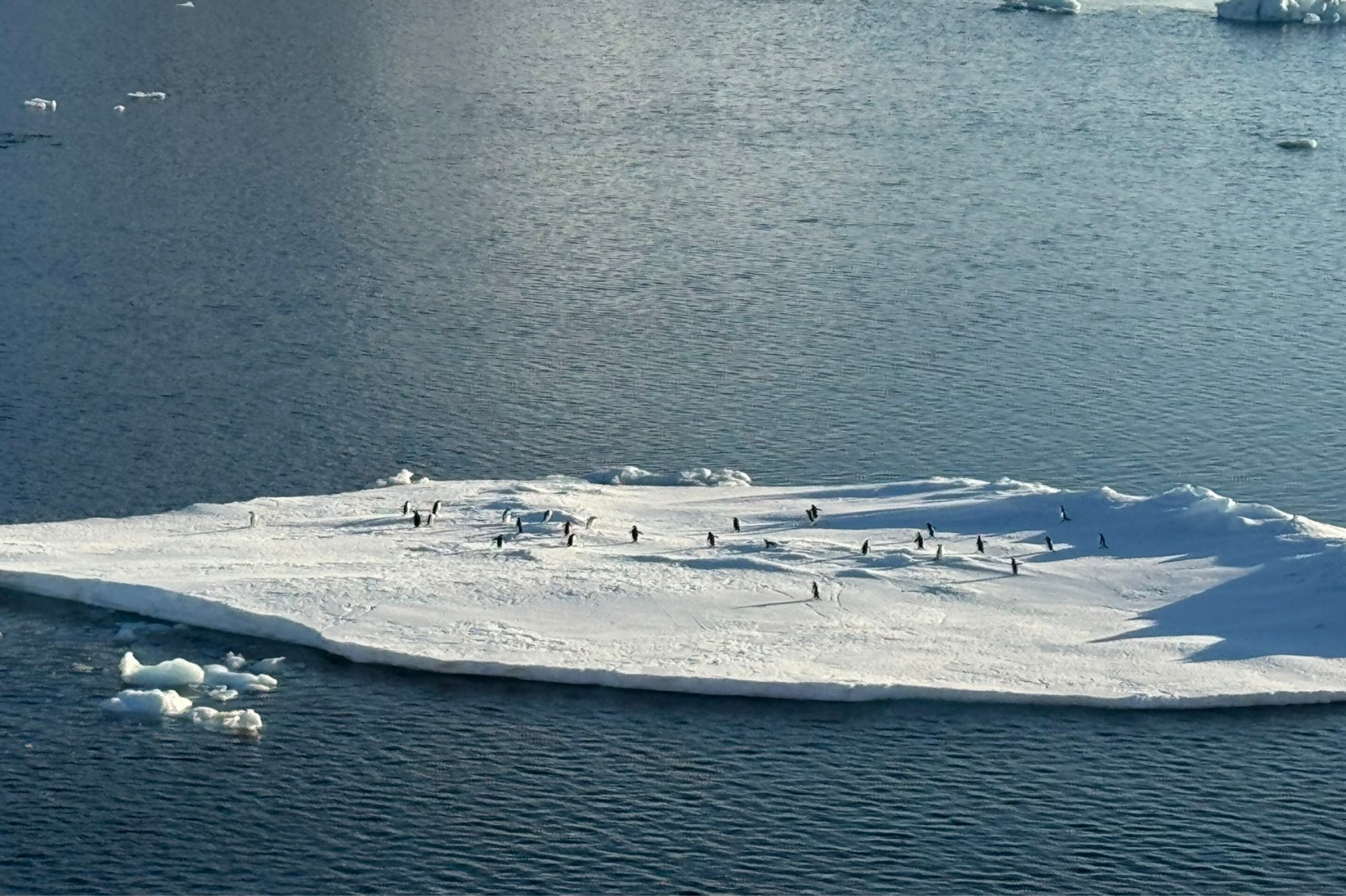 Above: “We woke at 5:30am today to watch our passage through Antarctica Sound - such a contrast to 48 hours ago. We’ve arrived in Antarctica and this will live long in my memory.” - Dr Will Homoky, Associate Professor at the University of Leeds. Photo Credit: Dr Will Homoky – follow Will on Twitter here.
Above: “We woke at 5:30am today to watch our passage through Antarctica Sound - such a contrast to 48 hours ago. We’ve arrived in Antarctica and this will live long in my memory.” - Dr Will Homoky, Associate Professor at the University of Leeds. Photo Credit: Dr Will Homoky – follow Will on Twitter here.
What is the PICCOLO project?
'PICCOLO' stands for “Processes Influencing Carbon Cycling: Observations of the Lower limb of the Antarctic Overturning”.
‘Overturning’ circulation is the name for the global network of ocean currents that redistribute heat, carbon, and nutrients across the world's ocean. In Antarctica specifically, it involves the sinking of dense, carbon-rich water from the surface, which then spreads along the sea floor, before it rises to the surface hundreds of years later, thousands of kilometres away.
The PICCOLO cruise is part of the NERC (Natural Environment Research Council)-funded RoSES (Role of the Southern Ocean in the Earth System) programme. The project is being led by PML and the University of East Anglia (UEA), alongside the British Antarctic Survey (BAS) (which operates the RRS Sir David Attenborough), the University of Plymouth, the University of Leeds, and the University of St Andrews.
Check out some highlights from the PICCOLO expedition below.
17th January 2024: leaving Punta Arenas...
We’ve left Punta Arenas and begun our journey out through the Magellan Straits, where I just spotted these beauties (Commerson’s dolphins) along side the ship #RoSES_ocean #AntarcticPICCOLO pic.twitter.com/Rh7AChURLf
— Dr Will Homoky (@willhomoky) January 17, 2024
23rd January 2024... the Antarctic Peninsula
Spectacular arrival on to the Antarctic Peninsula after a rough crossing of Drake Passage. Passing Gill island, we spot our first icebergs, penguins & whales #AntarcticPICCOLO @UniversityLeeds @PlymouthMarine @ueaenv @uniplymouth @_SMRU_ @univofstandrews @BAS_News pic.twitter.com/fhYFgWy36L
— Dr Will Homoky (@willhomoky) January 23, 2024
.jpeg ) Above: From left to right, our Dr Ruth Airs, Prof Tom Bell and Dr Ian Brown – delighted with the stunning views from the deck of the RRS Sir David Attenborough.
Above: From left to right, our Dr Ruth Airs, Prof Tom Bell and Dr Ian Brown – delighted with the stunning views from the deck of the RRS Sir David Attenborough.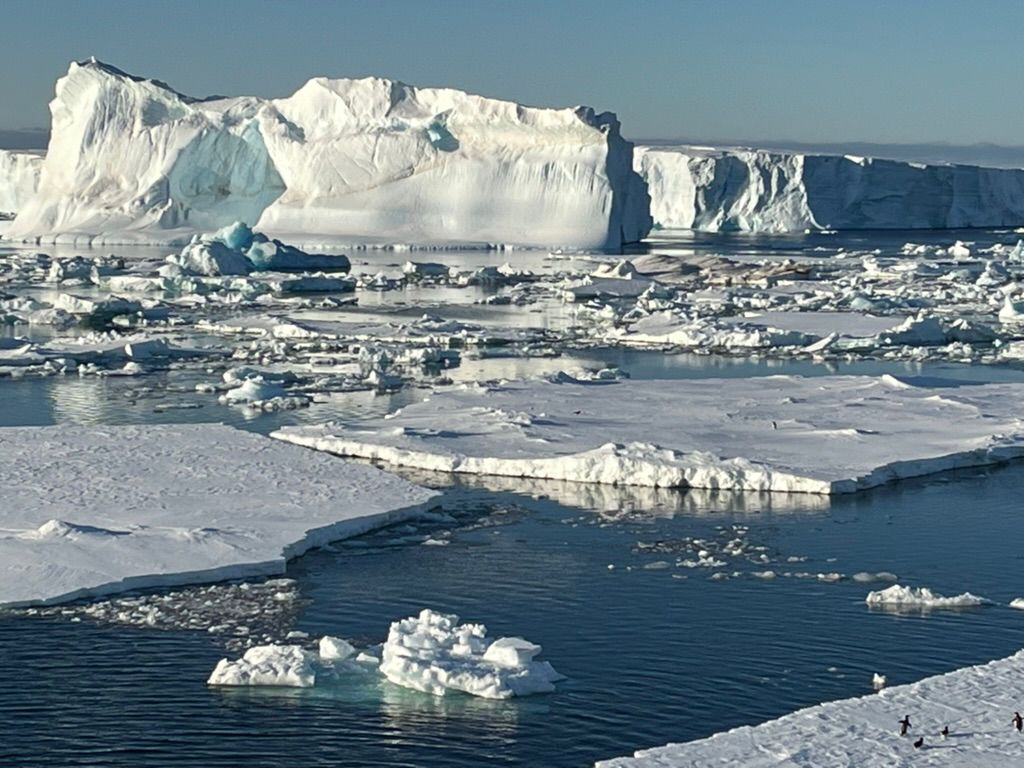 Above: “Here’s a general icescape approaching James Ross Island, with some penguins bottom right scurrying away” - Professor Karen Heywood. Photo credit: Karen Heywood.
Above: “Here’s a general icescape approaching James Ross Island, with some penguins bottom right scurrying away” - Professor Karen Heywood. Photo credit: Karen Heywood. 24th January 2024... speaking to ITV news!
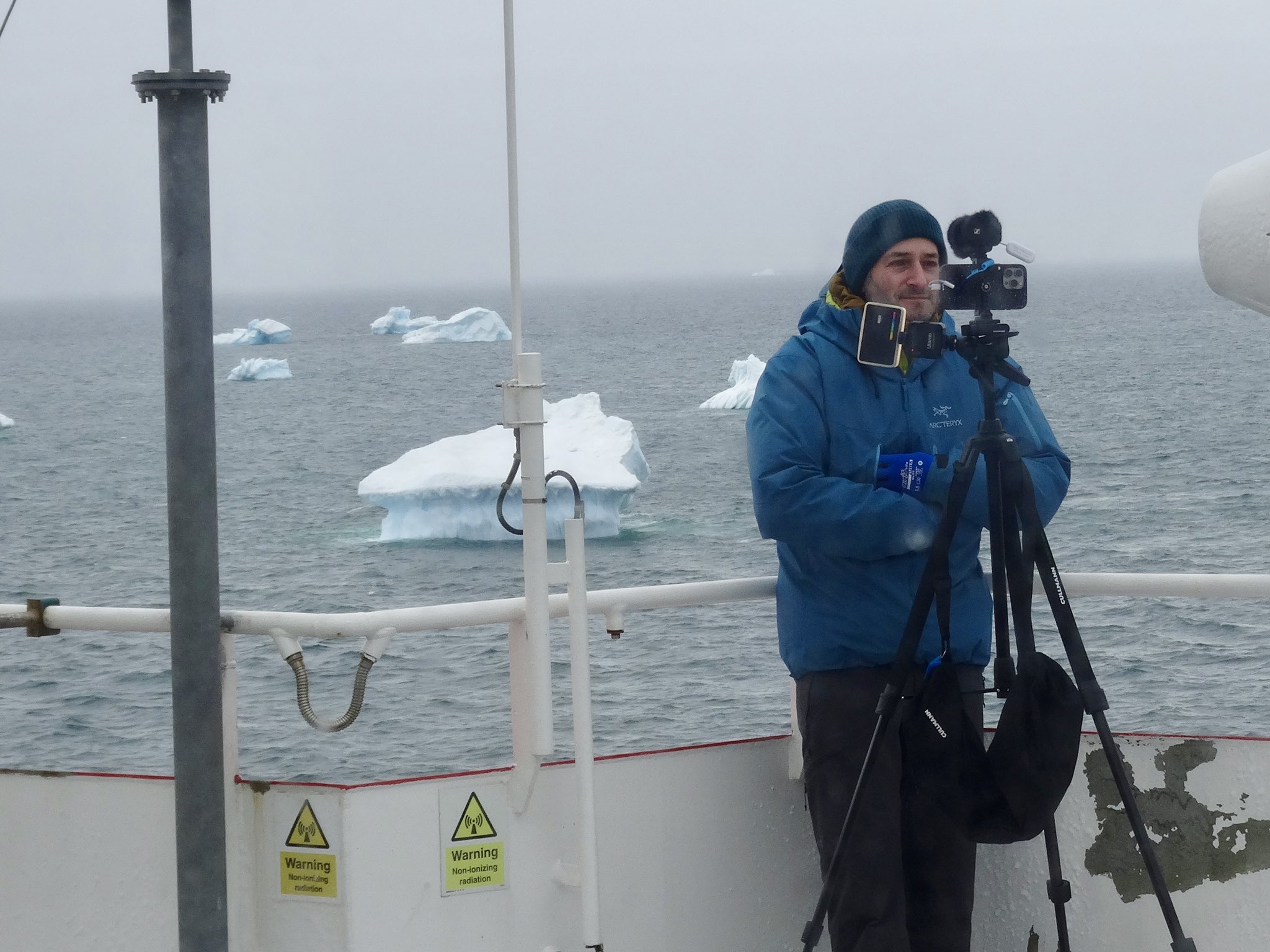 Above: Dr Will Homoky from the University of Leeds, speaking to ITV News with updates from their position on the Antarctic Peninsula. Photo Credit: Dr Will Homoky – follow Will on Twitter here.
Above: Dr Will Homoky from the University of Leeds, speaking to ITV News with updates from their position on the Antarctic Peninsula. Photo Credit: Dr Will Homoky – follow Will on Twitter here. 26th January 2024... 10 days in to the expedition!
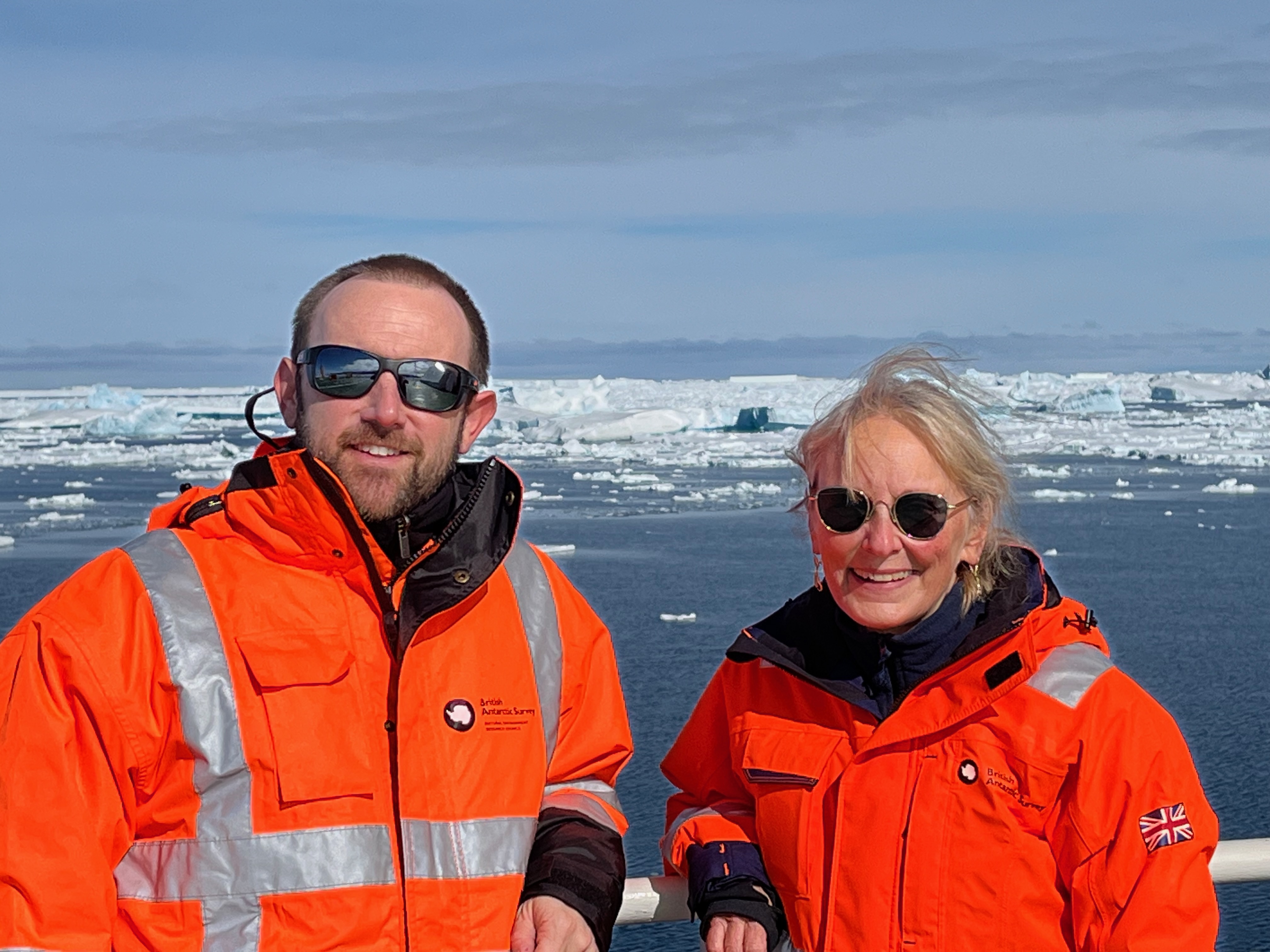 Above: PML’s Professor Tom Bell and Professor Karen Heywood of the University of East Anglia. Photo credit: Simon Ussher.
Above: PML’s Professor Tom Bell and Professor Karen Heywood of the University of East Anglia. Photo credit: Simon Ussher. PML’s Prof Tom Bell and Prof Karen Heywood of the University of East Anglia are co-leads of the PICCOLO project, and the pair also recently published a news story update on the RoSES website, titled: “And PICCOLO science begins!”. Excerpt below:
‘So, this is the moment we’ve waited 7 years for – we are about to start the PICCOLO science campaign. 32 PICCOLO scientists have been on the ship for 10 days, but now we start in earnest. Since leaving Punta Arenas, we’ve refuelled the ship in the Falklands, crossed Drake Passage, tested all of the instruments that the ship will be deploying for us, and dropped 12 people and huge amounts of cargo on the islands.
We wouldn’t want to give the impression that the PICCOLO scientists been sitting about for the week doing nothing though! The ship has been a hive of activity, with the team setting up instruments to measure everything you can think of in seawater, from how much chlorophyll there is in the water, to how cold and salty it is. We’ve had some practice sessions with each instrument and how the ship puts them into the water. We’ve been sorting out computer programmes to read and analyse the data. People are continuously problem solving, fixing faulty equipment, and often thinking of new ideas to test too. The few days of logistics taking the people to the islands has given an opportunity to get more equipment out of containers and set it up. It’s been busy!’
Read the full update on the RoSES website]
28th January 2024... Mooring recovery!
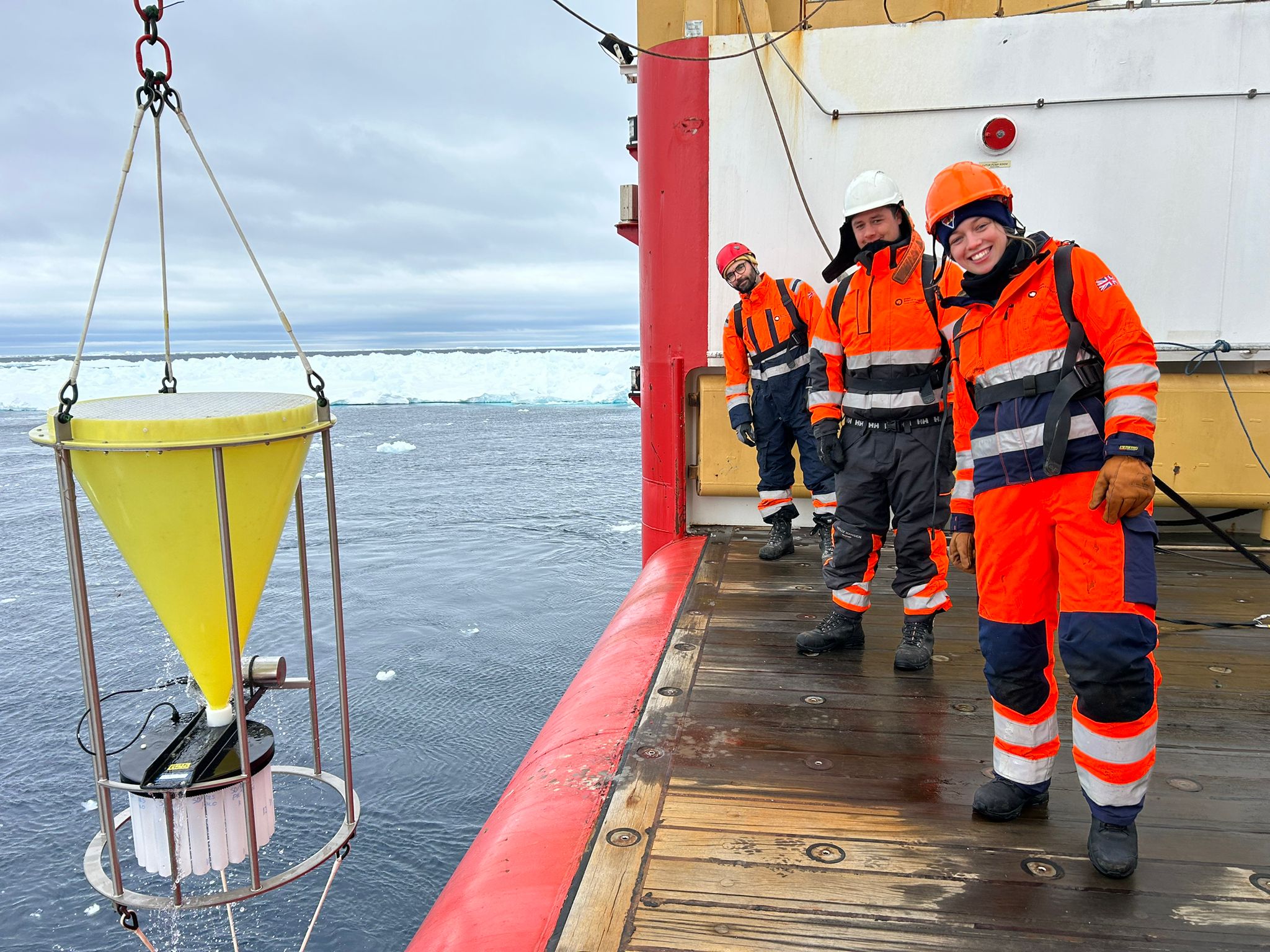
Above: Some smiling faces from crewmates Gethyn, Gary and Katy, following the successful mooring recovery. Photo credit: Sophie Fielding - British Antarctic Survey.
Our Professor Tom Bell explains what a mooring is, and why it’s such an important part of the scientific research for PICCOLO.
Q: What does your mooring look like?
A: The PICCOLO mooring is a set of equipment on a wire attached to the seabed. It is designed to periodically make measurements and collect samples from the surrounding seawater. It is about 80m long and was deployed on the seabed in 400m deep water in March 2023.
Q: Why are you so excited to have recovered the mooring?
A: The mooring has sat on the seabed throughout the Antarctic winter, narrowly avoiding getting smashed to pieces by various icebergs, including A23 (which is twice the size of London!). There was a substantial chance that it would no longer be where we had left it! Not only that, but when we arrived, the site was covered with sea ice. Some of the ice floes were 2km+ wide! Recovering the mooring involves sending a signal to make it rise up to the surface, so we could only do this if a gap in the sea ice appeared in the right place. Thankfully, we didn't have to wait too long before an opportunity presented itself. We recovered everything successfully and the extremely important data are now available for us to look at.
Q: Why is the mooring data so important?
A: The data that has been collected is invaluable as it gives information about the processes that take place during winter, when this area is completely covered with ice. These processes affect the flow of water into the deep ocean and the amount of carbon that the water contains. This is a crucial element of the PICCOLO project, and a major scientific win.
We have now started to sample water from different depths. Organising the sampling from 24 bottles by 12 people needs a "bottle cop" and a whiteboard.#AntarcticPICCOLO@Roses_ocean @PlymouthMarine @univofstandrews @BAS_News @_SMRU_@uniofeastanglia pic.twitter.com/7Mk3Yt4tkC
— Lars Boehme (@OceanLars) January 28, 2024
1st February 2024... Deployment of ocean gliders
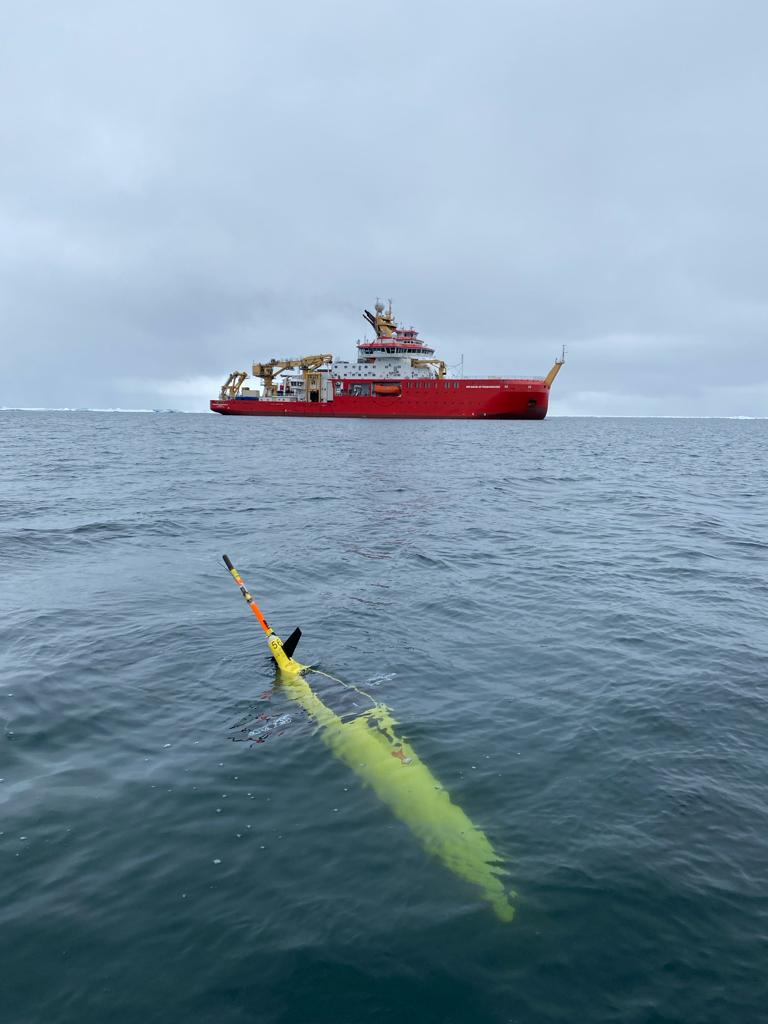
Above: “Deployment of two ocean gliders today just off the Larsen Ice Shelf. They will survey the region (piloted by our colleagues back at UEA) while we are busy making other measurements from the ship.” - Professor Karen Heywood. Photo credit: Gareth Lee.
2nd February... Sampling at a very early hour!
Sampling started for the day @ueaenv @BAS_News #AntarcticPICCOLO pic.twitter.com/ptVY2L1OOg
— Carol Robinson (@CarolRobinson8) February 2, 2024
We'll be sure to share more updates soon... stay tuned! In the meantime, please check out the articles posted by the PICCOLO crew on the RoSES website, and follow the hashtag #AntarcticPICCOLO on Twitter.